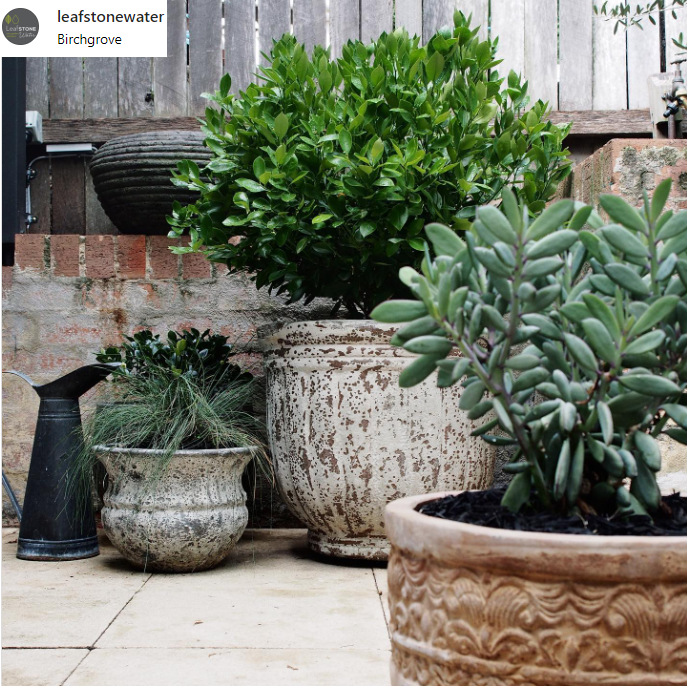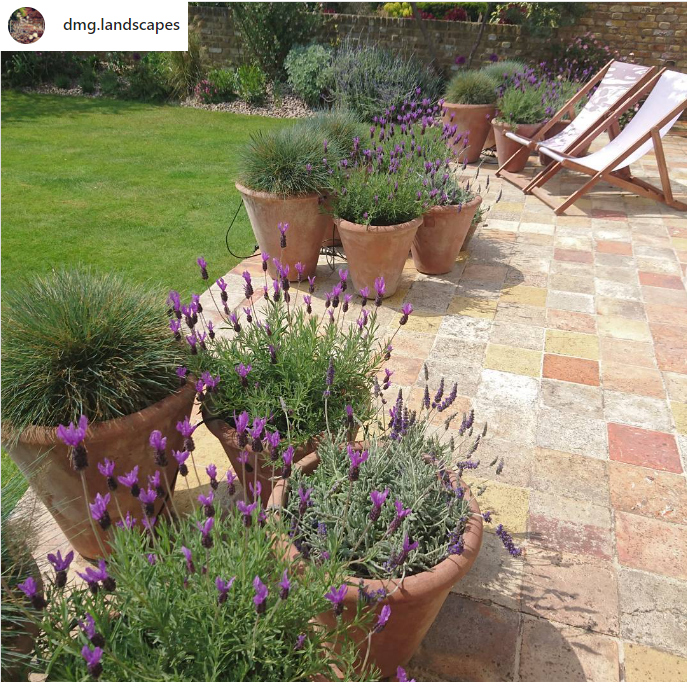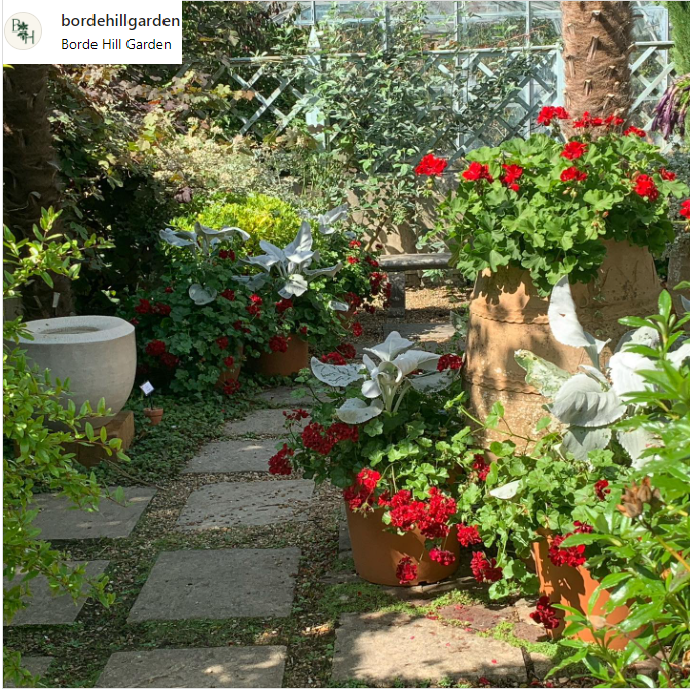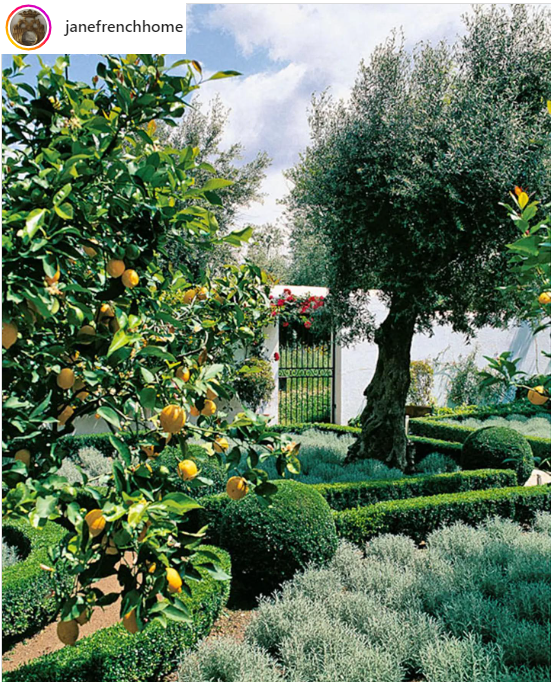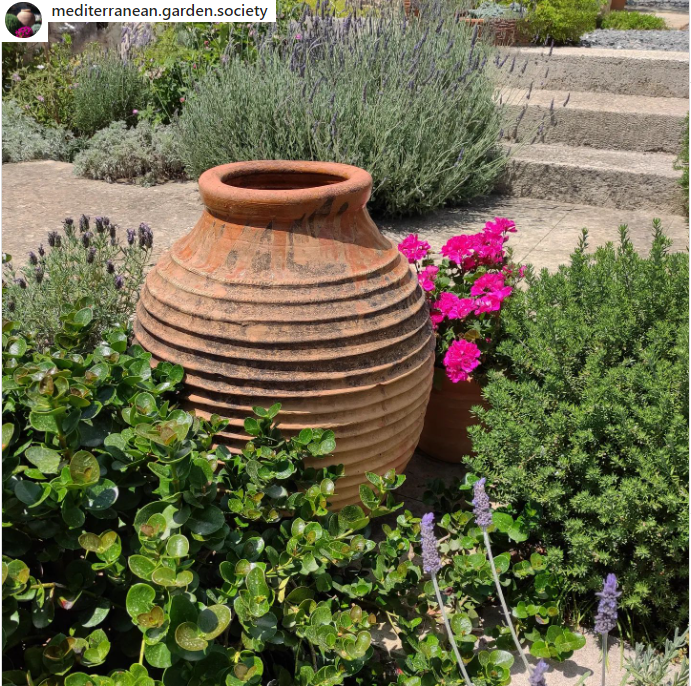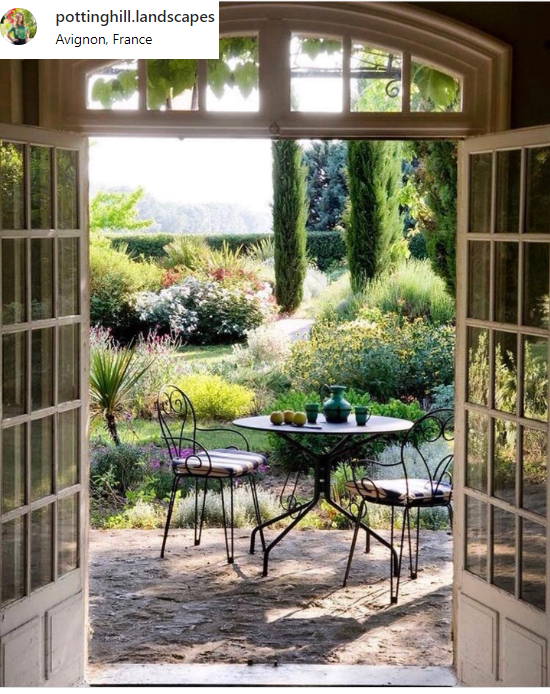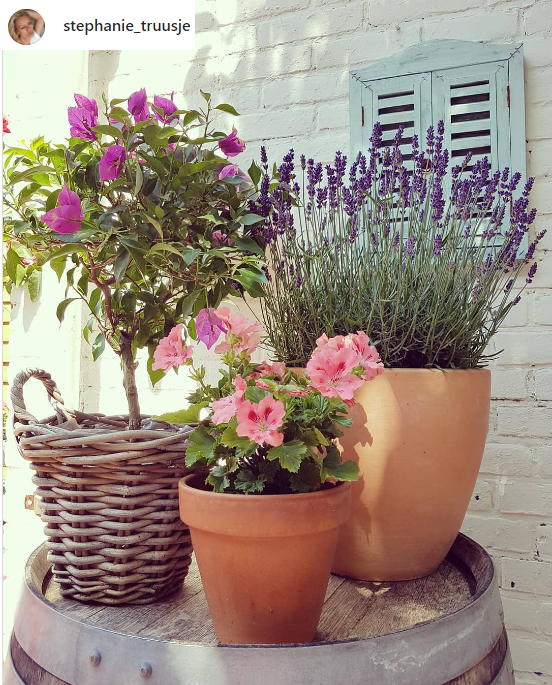WHAT'S IN A MEDITERRANEAN GARDEN?
Sometimes I find garden design concepts like ‘Mediterranean Garden’ hard to give actual plants for as it’s a concept, a feeling especially in Ipswich’s ever changing climate and soils. No matter what your garden design is it should be a complete sensory experience and practical for YOU.
So what makes a Mediterranean garden?
Mediterranean gardens are designed to respond to their hot and dry summer and a mild wet winter/spring. They usually have shady areas (pergolas or shade trees), water (water bowls and features), outdoor entertainment areas (better to be outside than in), dry tolerant plants, oversized pots and urns and bright focal points in the form of plants or materials (cushions, ornaments, tiles, rugs). Let’s also not forget the two most important factors food and scent! Clipped hedging and topiaries are also a hallmark of Mediterranean gardens.
When designing your Mediterranean Garden or Courtyard we need to take all these important aspects into consideration.
While there are many plants that survive well in dry hot Mediterranean climate, we have to understand that Ipswich can get very humid as well as very cold and wet and other years we have hot dry summers and cold dry winters. It can make plant choices a little harder.
For us Ipswichians, I find a simple plant palate is best. Chose only three or four varieties of larger and forever plants that will handle almost anything and allow yourself some fun with plants that may not be forever depending on our weather.
A small garden or courtyard could contain a hedge of Olives or Bay trees loosely clipped, bright colour geraniums, or salvia filling the space and then boxed in with a Rosemary or French Lavender border. Citrus trees planted into large oversized terracotta pots and trimmed into loose topiaries and ivy geraniums spilling down the sides. Thyme could be used in between pavers or as a ground cover (living mulch). Mandevillas, Jasmine or Trachelospermum could climb over structures. If you don’t want plants climbing over structures, hang large hanging baskets of colour from your structures, overflowing with colour.
The area will also need clusters of Terracotta Pots containing your herbs and vegetables (Tomatoes, basil, oregano, salt bush, mint), grouping pots together in odd numbers always looks best. Go oversized and chose the best potting mix to help with water retention.
You will also need a large water bowl with a bubbler or even a pond with a small waterfall.
Brightly coloured outdoor rugs on the pavers to soften the harshness of the area and brightly coloured cushions on the chairs. Bright does not mean neon. Think nature’s colours – brilliant azure blue of the ocean, deep lush greens of plants, terracotta brown of the earth and bright shades of pink for flowers.
To finish off the area plant up terracotta bowls of mixed succulents and mixed bright coloured annuals. These can be switched up depending on the time of year and climate. Hot dry summers – go for succulents in the more humid weather go for bright coloured annuals.
In small spaces, keep it simple so it doesn’t look too busy. You can go multiples of the same but different for example citrus trees like a orange, lemon and mandarin as they all have similar growth and leaves. Geraniums all look the same but may come in different colours. If you use terracotta pots make sure all pots are terracotta. Different sizes and styles are fine but don’t mix one blue pot, one black and then three small yellows. Big is best. Lots of little pots can look messy and are hard to maintain. One big impressive pot is more ascetically pleasing than ten tiny ones.
Design it
I struggle sometimes to visualise exactly what I want! Many of you would have experience my design paralysis when you come into the garden centre and find the entire showroom demolished because I wanted to move a table. I find it’s best to start with a clean slate, boxes, spray paint and hoses.
Take everything away and clean the area until its sparkling, do any maintenance work on the area now. Fix retaining walls, add compost, pressure wash pavers. I then use the hose and spray paint to make out garden beds and then boxes are used as pots/plants to help you get a feel for things.
Work out what you want from your area. If no one cooks there is no point in having lots of herbs.
Do the big stuff first, get that hedge in, buy that big pot, get that oversized chair and cushions. You may not have the money right now to fill that big pot but it’s better to have the big pot and place it where you want it then not have it. You can buy some smaller ones to go around it for now to dress it up. I have empty pots on my front patio that I am slowly filling. It’s ok that it takes time. Also empty pots are easier to move around so don’t jump the gun with pots and plants. Buy the expensive potting mix, compost, mulch. DO NOT ever scrimp on soil, it is the foundation to a great garden.
Have fun. Remember it’s a concept, a feeling. This garden is yours so make it your own!
Inspiration from Instagram
Some Plant Ideas for a Mediterranean Garden that suits the Ipswich Climate
Bay - Laurus nobilis
Lavender – French for longevity but can choose other varieties for pots
Olive - Olive 'Manzanillo' and Olive Helena grow well here.
Cypress - Prumnopitys ladei (Mount Spurgeon Black Pine), Gymnostoma australianum (Daintree Pine) and Juniperus conferta (Shore Juniper)
Rosemary – all forms grow wonderfully here
Citrus – most citrus grow wonderfully here
Bougainvillea – try a slow growing dwarf variety that you can contain by trimimg
Herbs - can be used in pots but don’t forget you can use Parsley as a loose border plant, thyme and oregano as a ground cover and even African Blue Basil as a boxed border
Blue Grass – Festuca glauca
Salt Bush - Atriplex nummularia
Salvia – perienal or annual
Geranium – Zonal and Ivy
Plumbago
Carissa Desert Star
Jasmine - Jasminum polyanthum
Star Jasmine - Trachelospermum jasminoides
Mandevilla – climbing and bush variety
Succulents for bowls or try dwarf Aloe Aloe varieties
Annuals like petunias
Cineraria Silver Dust - Jacobaea maritima
Pomegranate
Fig
Feijoa
Grapes - Pink Iona is a great variety for Ipswich

